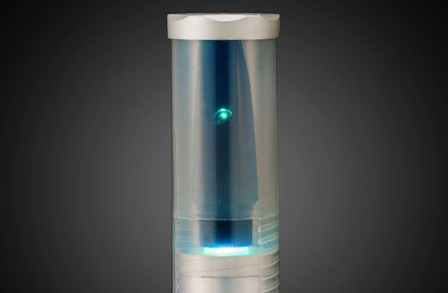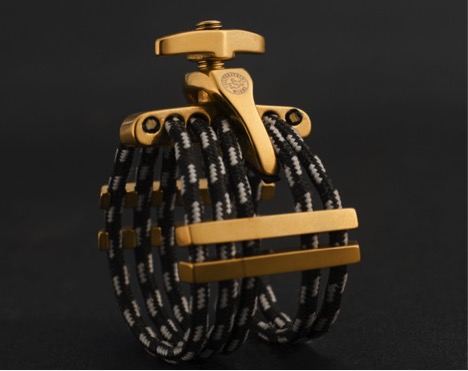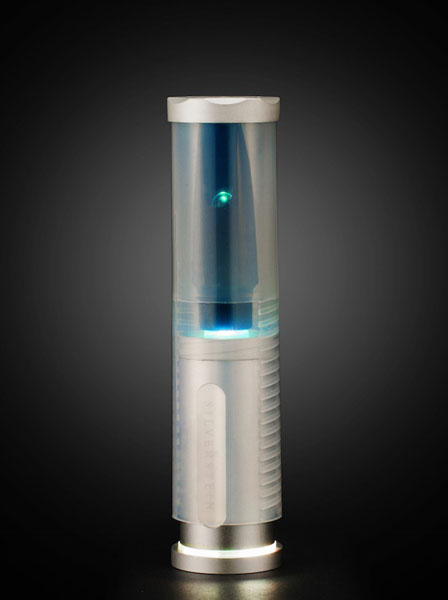Silverstein’s Space-Age Ligatures and Saxophone Sanitizers…Real Deal or Hype?
 Introduction
Introduction
As I discussed in my 2015 NAMM Product Review Part 1, over the past few years, the Silverstein ligatures have become one of the most popular ligatures used by professional players such as Dave Liebman, Jerry Bergonzi, Tony Malaby, Vincent Herring and the list goes on.
Sean Yang and May Rhyu over at Silverstein were nice enough to send me one of their new Cryo4 ligature for tenor saxophone as well as the Silverstein Light, which they just released. I will be reviewing the Cryo4 based on its construction, sound, and my overall impression of how it compares to other ligatures on the market. In addition, I will be giving a product overview as well as my overall impression of the Silverstein Light and what benefits it can provide.
The Silverstein Saxophone Ligature II

Construction
After speaking with Sean Yang over at Silverstein, I was told that the new Cryo4 ligature goes thru a cryogenic treatment process that submerges the alloy of the Silverstein ligature into -300°F, resulting in a metal that has a more natural sound with improved resonance. The four square pieces of metal that are adjustable on each side of the ligature are called “fine tuners.” These fine tuners supposedly change how the ligature responds to the vibrations of the reed. By adjusting the fine tuners to your mouthpiece, you will be able to find what suits your mouthpiece and reed combination best.
The Cryo4 uses a dotted cord that is interspersed with a refined strand allowing less contact with the reed but also provides a better grip around the mouthpiece. I was surprised to find out that this ligature was, according to the manufacturer, created with the same technology and manufacturing process as the cords used on the “Sky Crane” that lowered the Mars Rover onto the surface of another planet. In other words, it should be practically indestructible. The cap that comes with the Silverstein Cryo4 ligature is sturdy, cover’s the mouthpiece well, and reminds me of the Rico H ligature cap. Finally, when you purchase a Silverstein ligature, it comes with a 5-year warranty which you can register online, which is not typical with many ligature manufactures.
Sound
When test playing the Silverstein Cryo4 ligature, I decided to compare it to my current ligature, which is a Marc Jean ligature. I found the Silverstein Cryo4 ligature was very easy to take on and off of my mouthpiece as well as adjust the fine tuners while on the mouthpiece. I found that I did not have to tighten the top screw of the ligature very much and the reed stayed secure with minimal restriction. While playing thru my warm-up exercises, I found the Silverstein Cryo4 ligature allowed the reed to vibrate freely while allowing me to maintain an even and full sound from low Bb to high F# at various dynamic levels.
I thought the Silverstein Cryo4 ligature embodied many of the same characteristics as my Marc Jean ligature (core, edge, warmth, resonance) except that I found my sound to be a bit darker as compared to my Marc Jean ligature and the overall sound on the Cryo4 was a bit more spread.
Overall Impression
If you do not already own a Silverstein Cryo4 Ligature or currently own one of the first models, you have to give the Cryo4 ligature a try. The Silverstein Cryo4 ranges from $200-$245 dollars if you purchase one directly through the Silverstein Works website. At this price point, you essentially can purchase any other ligature on the market unless you are looking for an old vintage Brilhart, vintage Harrison ligature or Winslow ligature, which are going for hundreds of dollars on eBay.
I will say that the overall construction, warranty, sound benefits, and feedback I have gotten from players who have switched to the Silverstein or at least have compared it to their current setup have all been positive. Although the price is on the high side for a ligature, I would not discount the overall benefits the Cryo4 ligature has to offer. If this ligature is not in your price range, I would consider such other ligatures as: Vandoren M/O, Francois Louis, Marc Jean, Rovner Versa X, Joel Harrison, and the list goes on. If the Silverstein Cryo4 ligature is in your budget and you are in the market for a new ligature, I can almost guarantee you will not be disappointed.
Find on Amazon.com
Silverstein Works Classic Silver Ligature Medium/Small Clarinet/Alto Sax
Silverstein Light

Product Info
The Silverstein Light is, “a patented UV and Ozone sanitizer for your mouthpiece and instrument.” This is the first sanitizer I have seen on the market designed for musicians whether you are a woodwind player or even brass. The Silverstein Light has been lab tested and had a 99.9% effective rate at combating such notable infections such as “Escherichia coli, staphylococcusaureus, Klebsiella pneumonia, and MRSA.” In addition to its effectiveness at combating these bacteria’s for health reasons, the Silverstein Light also helps to reduce bad odors. The Light runs on a rechargeable battery which has a built in USB port. If you charge thru an outlet, The Light should be fully charged between 2 and 2-1/2 hours. If you decide to charge it through your computer, it could take between 4-5 hours.
Results
When you decide to use the Silverstein Light on one of your pieces of equipment, I recommend reading the instructions that comes with the device which clearly lists which timer to use depending on the piece of equipment.
Timer:
- First tap: This is a 15 minute runtime displayed by a white light and is the recommended timer when used to clean mouthpieces.
- Second tap: This is a 30 minute runtime displayed by a green light and is the recommended timer when used to clean larger mouthpieces, small instruments, i.e. clarinet, soprano saxophone, trumpet.
- Third tap: This is a 45 minute runtime displayed by a blue light and is the recommended timer for large instrument cleaning, i.e. trombone, tuba.
- Power off.
Note: The device will shut off at the end of the cleaning cycle and the button is very touch sensitive so make sure to leave it on a surface that won’t change the various cleaning settings.
I have been using the Silverstein light for over a week on my tenor sax as well as hard rubber tenor mouthpiece. I typically just use a cloth and sax swab to clean my saxophone after every practice or rehearsal, but I do I have to say that sometimes I do not put as much time into cleaning my saxophone after every practice as I should. I did not notice much of a change on my saxophone in terms of how clean the instrument actually was but I did notice my mouthpiece seemed to be a bit cleaner so I will continue to use the Light for further testing.
Overall Impressions
If you are a health nut, do not clean your saxophone very much, or like me who wants to make sure that my equipment is in top shape mechanically as well as stays as clean as possible, the Silverstein Light is a device you need to check out. There is the Light Basic, Light Standard, and Light Plus. Each model is the same but comes with different accessories.
I want to thank Sean Yang and May Rhyu for sending me the Cryo4 Ligature and the Light to review. Whether the Cryo4 or Light is a fit for your setup or not, I highly recommend visiting the Silverstein website to find out more information about their innovative products and I can’t wait to see what new products Silverstein will develop for the future.
For more info on Silverstein products:
http://www.silversteinworks.com





